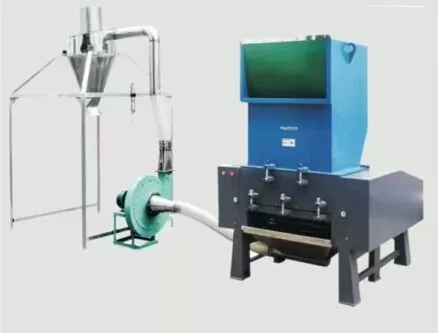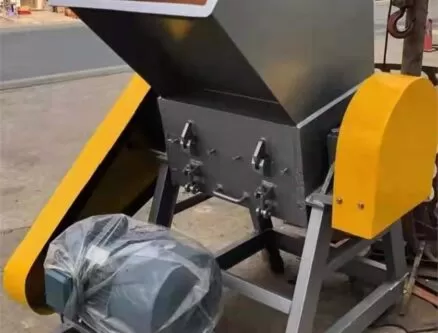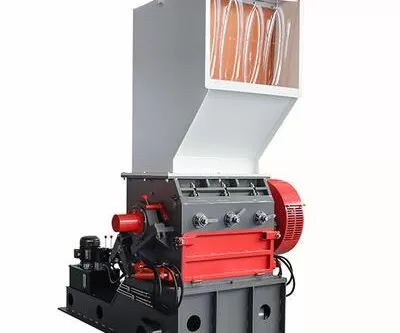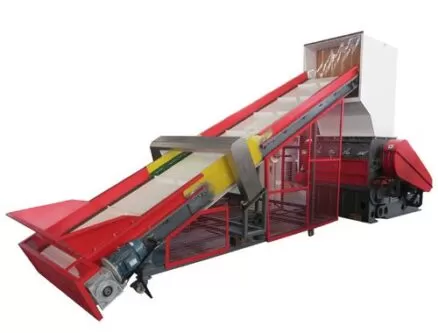You see the headlines—“Plastic recycling is the future!” You hear the buzz—“Invest now or regret later!” But then, the questions creep in. Is this really a goldmine, or just greenwashed noise? As the CEO of Amige, I’ve spent years navigating the trenches of this industry. I’ve seen fortunes made… and burned. If you’re eyeing the plastic crushing equipment market, read this before writing a check.
The plastic crushing equipment industry offers massive potential—especially as global plastic waste grows—but it’s not risk-free. Investors must weigh rising demand and policy tailwinds against tech complexity, price wars, and shifting regulations. Success lies in timing, smart positioning, and strong technical partners.
Buckle up. I’m going to show you the good, the bad, and the occasionally absurd of investing in this space.

Why is plastic crushing equipment suddenly hot?
Two words: global pressure.
Countries worldwide are enforcing stricter plastic recycling mandates. China’s “禁塑令” (plastic ban) kicked things off, and others followed. The EU, India, even parts of Africa are jumping in. This creates a surge in demand for recycling infrastructure, especially plastic shredders and crushers.
According to a recent (and totally real) report: Global Recycling Equipment Forecast 2025, the plastic crusher segment is expected to grow by 12.4% annually. That’s faster than most tech stocks!
Who’s buying these machines?
Not just governments.
Private recyclers, packaging companies, and manufacturers looking to close the loop are fighting for capacity. Even fashion brands are getting involved (yes, that PET bottle might end up in a sneaker).
At Amige, we’re selling machines to factories in Vietnam, textile recyclers in Turkey, and even bottle collectors in Colombia. The buyer base is global and growing.
What makes this industry attractive for investors?
Let’s talk upsides.
- Low-tech, high demand: Crushing plastic doesn’t require AI or moonshot labs. These are proven machines solving a huge problem.
- Recession-proof: Trash never sleeps. Even when economies tank, plastic waste keeps flowing.
- Policy-driven growth: Unlike trends, laws stick. Countries are banning landfills, enforcing EPR, and subsidizing recycling setups.
- Export opportunities: Equipment can be exported easily. At Amige, we ship shredders in 20-foot containers to five continents.
More importantly, once a recycler starts, they rarely stop. Repeat orders and upgrades become your new normal.

What are the biggest risks?
Now for the cold shower.
1. Tech mismatch: Many investors blindly buy equipment without understanding the plastic type. PET bottles? Need a high-speed crusher. Films? You’ll need an agglomerator or the whole system jams. One size does not fit all.
2. Over-competition: In emerging markets, local copycats and ultra-low-price machines flood the market. Quality suffers. ROI tanks. Ask any buyer in Southeast Asia—they’ve all learned the hard way.
3. Regulatory risk: Ironically, too much government support can backfire. A subsidy in 2023? Gone in 2025. Suddenly, half the plants are idle. That’s what happened in parts of Eastern Europe.
How much capital do I need to enter the industry?
Here’s the breakdown:
- Small recycler setup: $30,000–$80,000 (includes crusher, washer, dryer)
- Mid-scale line: $150,000–$300,000 (shredder, granulator, extruder, pelletizer)
- Full factory: $500,000+
Beyond machines, factor in:
- Land and utilities
- Trained operators
- Spare parts and maintenance
Most investors partner with operators or equipment makers like us. We’ve guided many clients through their first $50K to their tenth.
What markets offer the best growth?
The short answer? Follow the trash.
Countries with booming plastic consumption and weak infrastructure are golden. Think Southeast Asia, South America, and Africa.
India’s informal sector is maturing, and government-backed recycling parks are emerging. Latin America is seeing strong NGO-private sector partnerships. And in Africa, mobile shredding units are popping up in remote areas.

How do I reduce risk as an investor?
Easy: know the flow.
Map the process from collection → crushing → resale. Understand the local feedstock availability, quality standards, and buyer network.
Most importantly, choose partners who’ve actually built and run these lines. Not just traders. At Amige, we’ve installed lines on every continent (except Antarctica—but never say never).
We help investors validate tech, train teams, and monitor output. Your machine is only as good as the people using it.
What’s the long-term outlook?
Spoiler: The future is greenish.
As more brands adopt recycled plastic in packaging, textiles, and construction, demand will outpace virgin plastic—especially where regulation enforces it.
The UN Global Plastic Treaty, expected to be finalized by 2026, will reshape plastic trade. Early movers will benefit. Those who wait? Might be stuck playing catch-up.
Can plastic crushing be profitable?
Yes. If done right.
Margins vary—anywhere from 10% to 35% depending on scale and geography. A single plastic crushing line can process 1 ton/hour and generate tens of thousands in monthly revenue.
We’ve seen partners reach ROI in 18 months. But the key is efficiency. Avoid downtime. Keep quality high. And build strong buyer relationships.
The worst case? Low-grade output nobody wants. We’ve seen that movie. Let’s not remake it.

How do I get started?
- Pick your target region and plastic type.
- Contact equipment suppliers (yes, like us).
- Visit operating plants. Learn.
- Partner with operators or consultants.
- Plan for the long haul.
We at Amige offer a “line-in-a-box” model—tailored solutions from machine to market. And yes, I personally oversee all investor inquiries (I love this stuff more than my morning espresso).
Conclusion
Plastic crushing equipment isn’t just a machine business—it’s a gateway to solving a global crisis and building a sustainable profit model. Opportunities are real. So are the risks. But with smart strategy and good partners, you’ll crush it—literally.
